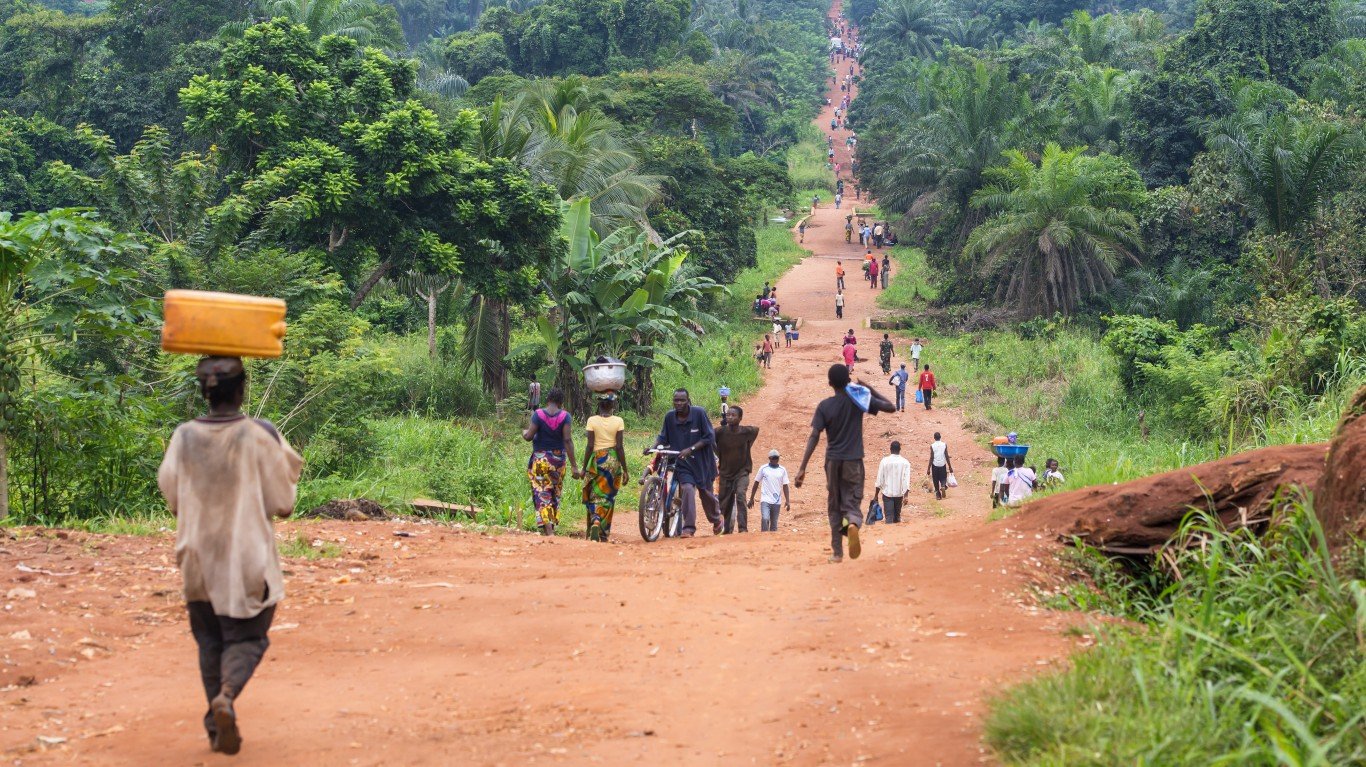
12. Democratic Republic of the Congo
> Catastrophic ecological threats: Three: Food Security; Population; Water Risk
> Global peace index, 2022 (1-5, most to least peaceful): 2.934 – #158 of 163 countries
> GDP per capita, 2021: $584 – #8 lowest of 163 countries
> Human development index: 0.5 – #179 of 191 countries
> Population, July 2021 to 2050: 95.9 million to 217.5 million – 126.8% growth
According to the ETR, the Democratic Republic of the Congo receives 39% of its food imports from low-peace countries, making its food supplies even less secure. Meanwhile, the country’s population is projected to well more than double from 2021 to 2050. Even so, many are leaving, with climate and conflict refugees from the DRC growing. The country’s peace index ranks sixth lowest.
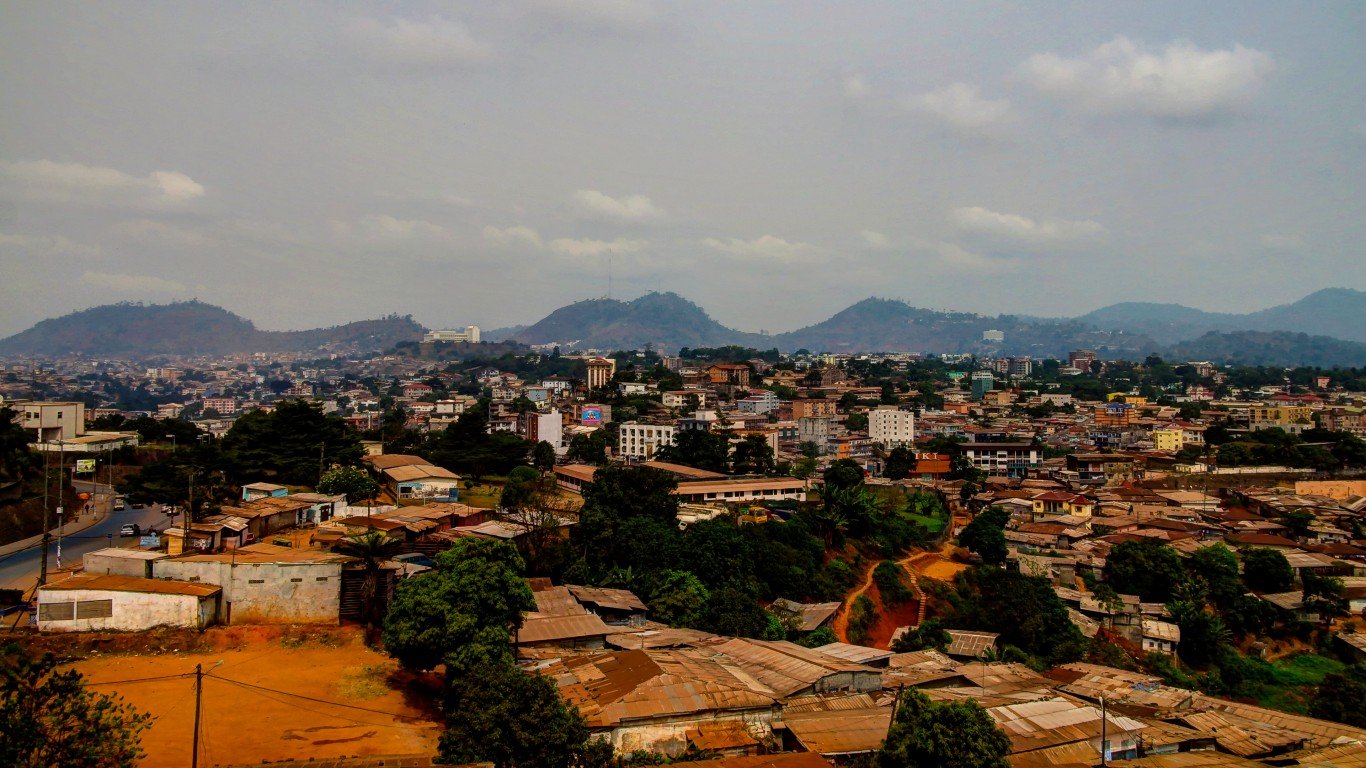
11. Cameroon
> Catastrophic ecological threats: Three: Food Security; Population; Water Risk
> Global peace index, 2022 (1-5, most to least peaceful): 2.017 – #142 of 163 countries
> GDP per capita, 2021: $1,662 – #39 lowest of 163 countries
> Human development index: 0.6 – #151 of 191 countries
> Population, July 2021 to 2050: 27.2 million to 51.3 million – 88.5% growth
Recently, the UNHCR, the U.N. Refugee Agency, named Cameroon as one of 10 countries in the Sahel region of Africa facing hardships due to years of armed conflicts as well as rising temperatures and food insecurity. The other countries are Burkina Faso, Chad, the Gambia, Guinea, Mali, Mauritania, Niger, Nigeria, and Senegal.
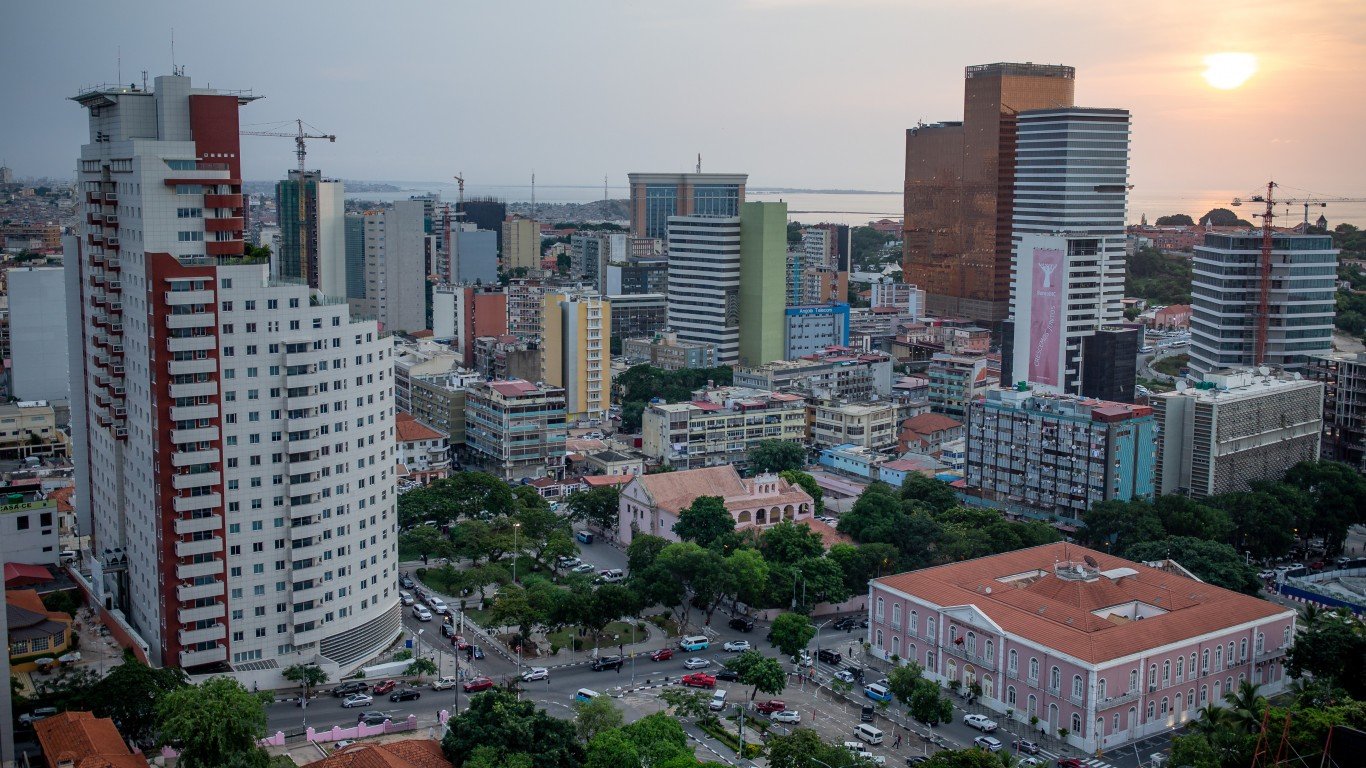
10. Angola
> Catastrophic ecological threats: Three: Food Security; Population; Water Risk
> Global peace index, 2022 (1-5, most to least peaceful): 2.087 – #78 of 163 countries
> GDP per capita, 2021: $2,138 – #47 lowest of 163 countries
> Human development index: 0.6 – #148 of 191 countries
> Population, July 2021 to 2050: 34.5 million to 72.3 million – 109.6% growth
Although Angola struggles with food scarcity and water risk, the country has benefited in one respect. The war in Ukraine has pinched oil supplies, leading to a spike in prices. The ETR report notes this has allowed Angola to pay down its debts. Meanwhile, Angola’s population is projected to skyrocket by 2050, more than doubling. That compares to a global growth rate of 16% by 2050. Meanwhile, the country will also face the most increase in water stress by 2040.
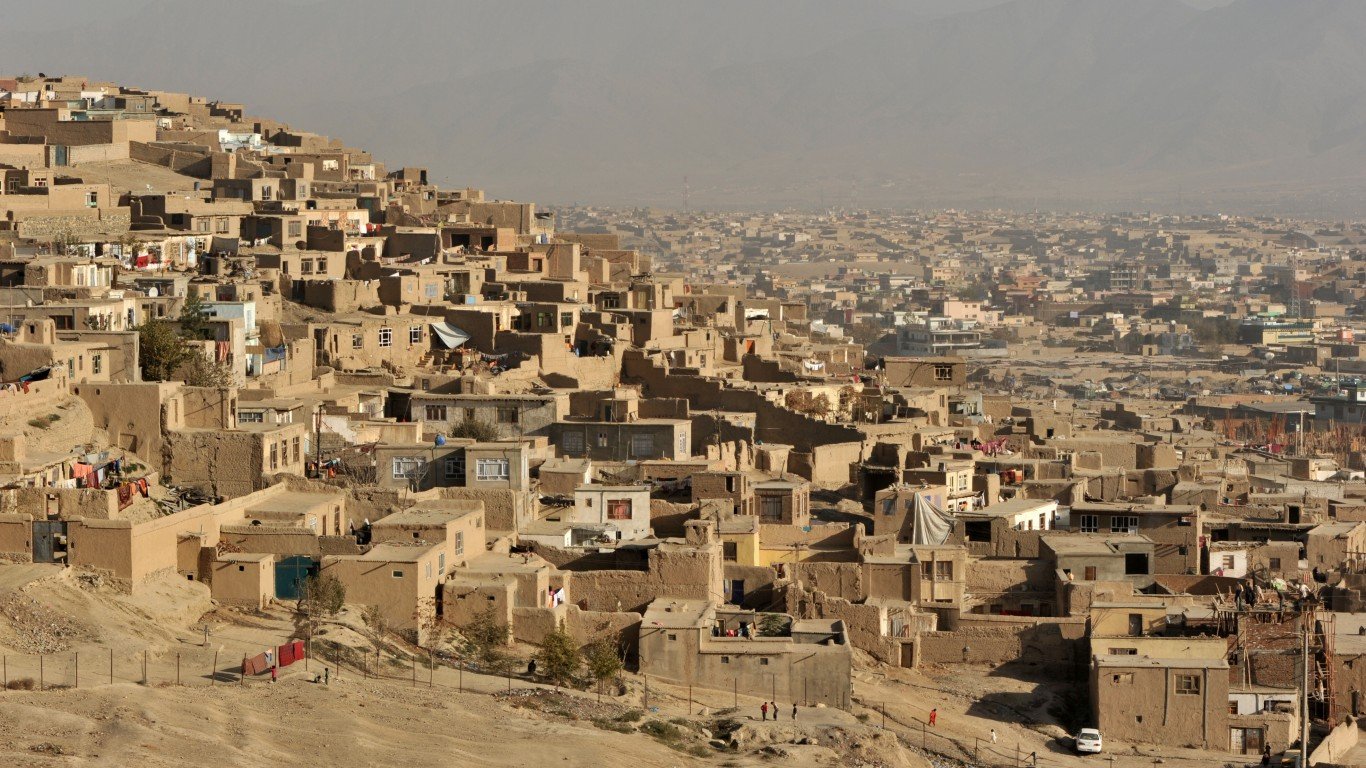
9. Afghanistan
> Catastrophic ecological threats: Three: Natural Disasters; Population; Water Risk
> Global peace index, 2022 (1-5, most to least peaceful): 3.154 – #163 of 163 countries
> GDP per capita, 2020: $517 – #7 lowest of 163 countries
> Human development index: 0.5 – #180 of 191 countries
> Population, July 2021 to 2050: 40.1 million to 74.1 million – 84.7% growth
Internal conflicts and natural disasters displaced 3 million refugees from Afghanistan in 2021, the ETR reports. Many of those displacements were prompted by the U.S. withdrawal after 20 years of war. The Taliban now rules the country, which ranks absolute last in the peace index. It also has the seventh lowest GDP per capita of the 163 countries in the report and among the lowest human development. Afghanistan, which already experienced an increase in the number of natural disasters since 1981, is expected to see the most increase in water stress by 2040.
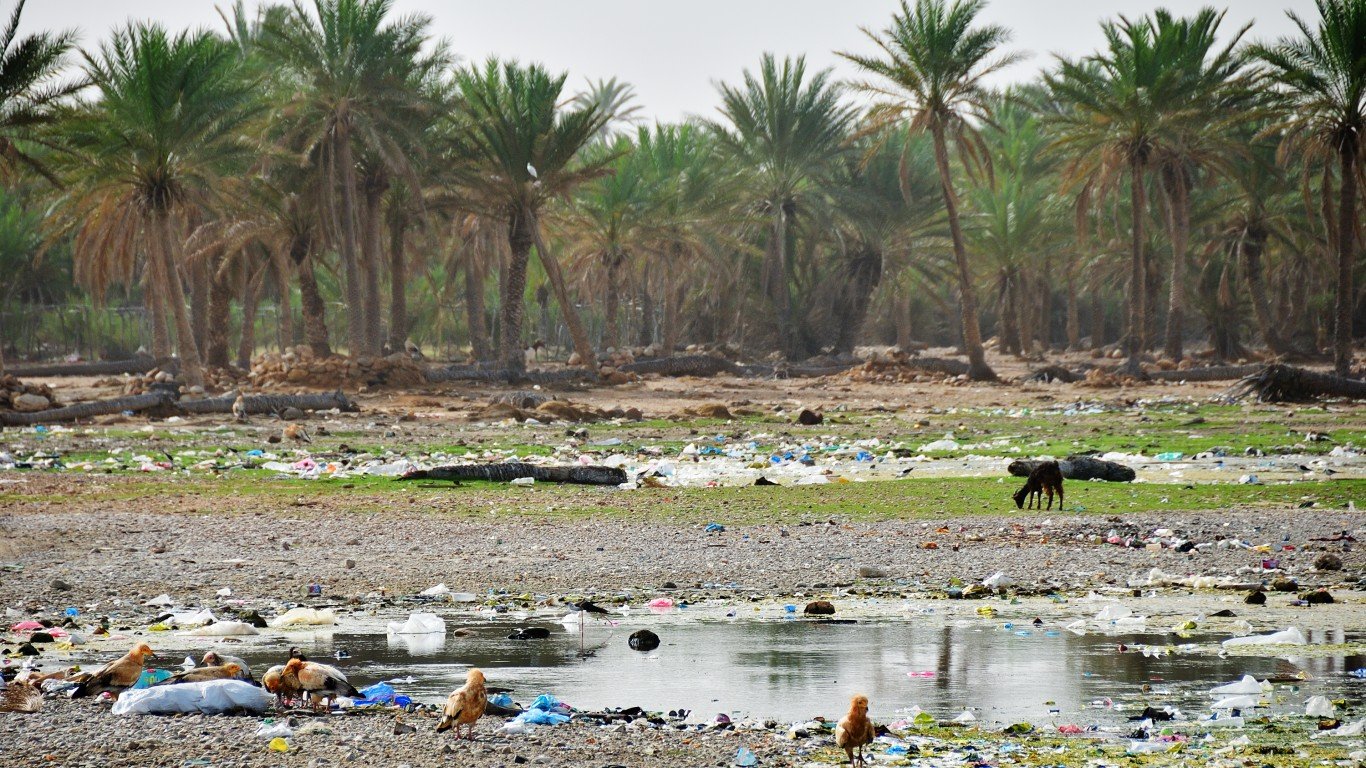
8. Yemen
> Catastrophic ecological threats: Four: Food Security; Natural Disasters; Population; Water Risk
> Global peace index, 2022 (1-5, most to least peaceful): 2.609 – #162 of 163 countries
> GDP per capita, 2021: $691 – #13 lowest of 163 countries
> Human development index: 0.5 – #183 of 191 countries
> Population, July 2021 to 2050: 33.0 million to 55.3 million – 67.7% growth
Noted by the ETR as being among the eight countries with four catastrophic ecological threats, a civil war has ravaged this country on the Arabian Peninsula for eight years. The ongoing conflict is between the country’s government, supported by Saudi Arabia, and Houthi rebels backed by Iran. The war has resulted in an ongoing humanitarian crisis. As a result, the country ranks second to last in the peace index, with one of the lowest GDP per capita. The country will also face the most increase in water stress by 2040 as well as among the most conflicts as a result.





